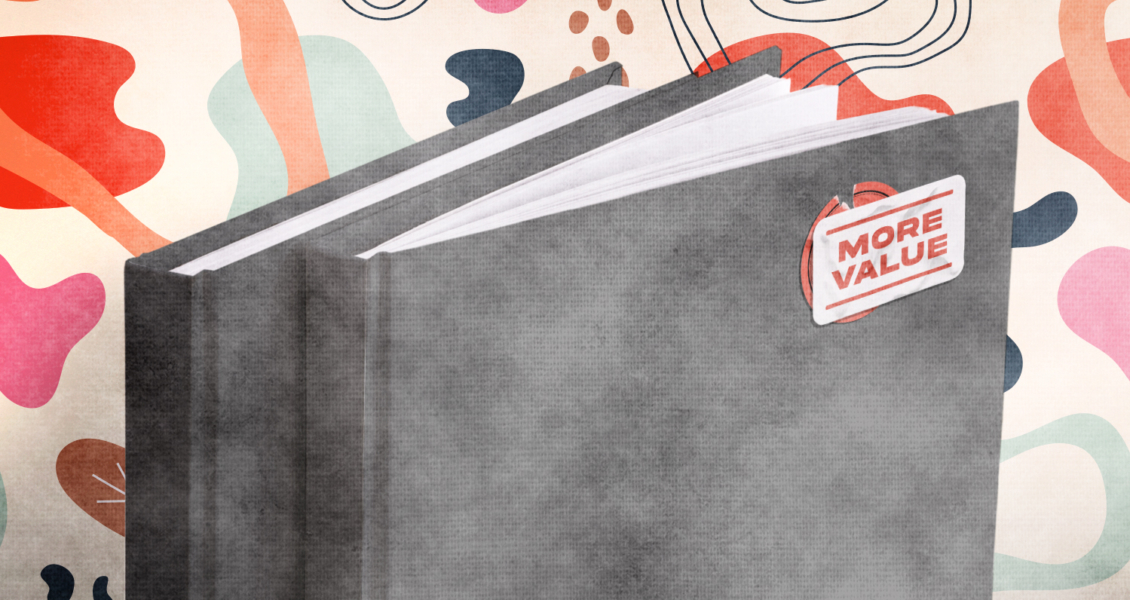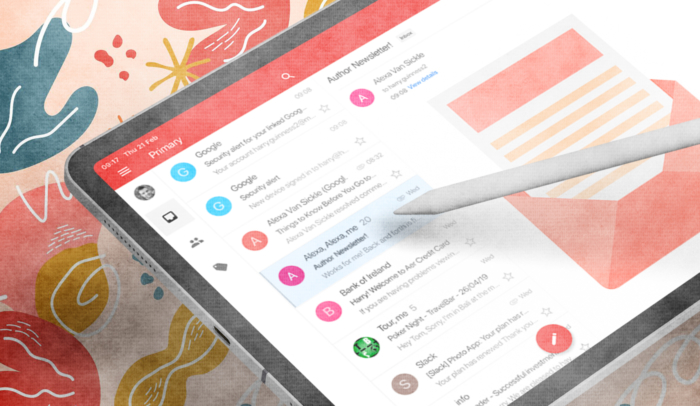How do you build an audience for your self-published book? There are several ways to go about it, but starting an Author newsletter is typically one of the best options.
A newsletter can be a great way to build your audience IF:
- it fits your marketing goals
- you have the time and resources to do it
But to be perfectly clear, you don’t NEED an Author newsletter. There are many ways to promote a book, and plenty of people have written wildly successful books without a newsletter.
The question comes down to why you wrote your book in the first place and whether a newsletter will help you use that book to generate revenue.
On one level, you wrote your book to share a message. Maybe it’s a self-help book, or maybe it can teach readers how to do something.
But you also have your own goals. Things like:
- building your career
- promoting a product or service
- connecting with the media
- positioning yourself as an expert in your field
If driving engagement with an audience would help you with your specific goals, and if a newsletter makes sense for your book marketing plan, this post will tell you everything you need to know.
I’ll tell you how to create your Author newsletter, what to put in it, how often to send it, and how to make it a success even before your book comes out.
Do You Need an Author Email Newsletter?
If you want to build engagement with an audience, email marketing is a great option. It has the highest return of anything you can do, especially as a non-fiction Author.
Unlike social media posts, emails go straight to the inbox of the people you’re trying to reach. And if you build your newsletter the right way, every one of those people will be a qualified lead—just because they signed up.
But that doesn’t mean it’s the right choice for your situation. Perhaps you wrote a memoir, and you aren’t trying to use your book to build your career or sell a service.
Or maybe your business already has a newsletter, so you don’t need to start another one as an Author.
But if it makes sense for your situation, an Author newsletter is a great way to build your audience. It allows you to reach out to those people with specific asks and offers: buy my book, buy it for a friend, check out my new mini-course, etc.
Still, those asks should be relatively few and far between. Most of the time, your newsletter should offer genuine value. This ensures that people stay on your list—and it increases the likelihood that they’ll respond to your offers.
So, how do you do that?
What Content Should You Put in Your Author Newsletter?
On a fundamental level, newsletters work the same way as all relationships—they start by being generous to someone else.
A successful newsletter is NOT a report on the last week of your life: “Here’s what I’ve been up to.” Rather, it’s consistently offering something your audience wants.
That could be a daily meditation, weekly tips for career success, monthly case studies, free quarterly mini-courses, seasonal templates or worksheets, a weekly digest of industry news, or just about anything you can imagine.
The choices are endless, but the way to decide what to include in your newsletter is always the same: think about your target audience and the problem your book solves for them. Then, provide more content that solves that same problem.
Remember, your newsletter should always provide genuine value. I can’t stress that enough. If your newsletter isn’t going to provide value for your audience, don’t send it.

The more value you offer, the more your audience will want to give you something in return.
How Often Should You Send Your Newsletter?
How often you should send your newsletter comes down to 3 basic questions:
- How much time can you put into it?
- How much time will it take to produce your content?
- How often will your audience want that content?
It’s important for your newsletter to have a regular cadence: weekly, monthly, seasonally, etc. But don’t try to put it out more often than you reasonably can, or more often than your audience wants.
It’s okay to put your newsletter out more often around special events—new book launches, holiday book sales, seasonal events, giveaways, freebies, pre-orders, and the like—but keep it on a regular schedule the rest of the time.
Ultimately, the right cadence depends on your goals and how you can serve those goals by giving your audience something they want.
Remember, your content should always tie back to what you’re trying to promote or relate to whatever you’re establishing yourself as an expert in. Keep that in mind when you’re deciding how often to send it.
You could:
- solve a current problem for your audience
- apply the principle of your book to an upcoming holiday or event
- show how your thought leadership ideas shed light on current events
- create cartoons that illustrate the principles of your book in everyday life
If you have a WordPress blog on your Author website or you’re posting regularly on LinkedIn, you can create your content in those places and then link to it in your newsletter.
Whatever you choose, send your newsletter only as often as time allows and only when you have something genuine to offer that ties back to your book or your Author brand.
Even if your newsletter is on a regular schedule, never put it out “just to write something.” If you don’t have anything to offer, don’t send it.
6 Tips for Creating a Great Author Newsletter
1. Use a (free) newsletter service
I strongly recommend using a free newsletter service like MailChimp to build and maintain your newsletter list. Once your list gets above 2,000 people on MailChimp, you’ll have to pay for it (but that’s a good problem to have).
You want new subscribers. Paying a small amount to send them regular email content is worth it to keep building that list—assuming that building your list serves your other goals.
MailChimp provides some automation to make things easier for you. It will also make sure your newsletter complies with the law when it comes to things like opt-in requirements and unsubscribe links.
That way, you can focus all your efforts on creating great content.
For tips on pulling together an initial list, see my post on becoming an Amazon bestseller, which includes a section on constructing your email list.
2. Use a relevant “from” name and email address
Like any other email, your newsletter comes from a given name and email address.
For the “from” name, use whatever name your email audience will be most familiar with—for example, your own name, your brand name, or your book title.
If part of your goal is to build more recognition or authority for a name your audience doesn’t know (e.g., moving from brand recognition to name recognition), use the “from” name to connect them together: “Jane Smith | Big Name Brand.”
The name your list DOES recognize needs to be included in order to encourage them to open the email.
As for your email address, it should use the domain you registered for your book or Author brand. That way, the address is aligned with your branding efforts: [email protected].
3. Design your newsletter to fit your brand
Designing your newsletter isn’t a matter of personal preference. It’s a branding exercise.
You might want a header that includes your book cover, like the one you created for your LinkedIn Author page. Or you might want a plain newsletter that feels more personal.
Your newsletter design doesn’t have to be fancy. It just has to fit your brand. Some of the best emails are just words—they can feel more like they’re coming from a friend.
That can be a powerful choice for an indie Author, especially if your newsletter includes personal anecdotes or short stories from your own life.
And one of the best things about self-publishing is that you can connect with your audience in a personal way with exclusive content from your book (or any other newsletter content you want to create).
When you retain your full copyright, you can use your book however you want.
4. Ensure the integrity of your subscriber list
Just because someone has a Gmail address doesn’t mean they’re a legitimate subscriber. Hackers and bots are notorious for using fake email addresses.
To make sure your email list is attracting genuine new readers, set up strong authentication and double verification (or double opt-in).
In other words, when someone signs up for your newsletter, you want to make sure it’s a real person, not a robot. With double opt-in, MailChimp will send a verification email to their inbox to confirm the subscription.
MailChimp also gets suspicious of large email lists that appear out of nowhere, especially if they have low open rates. So if you have a large list and you’re using MailChimp for the first time, send your first few newsletters to a few thousand people at a time.
As your list grows, follow up at least once a year to make sure the list still looks good. Send an “are you still there?” email to subscribers who haven’t opened your last few issues, and scrub them from the list if they don’t open it.
Also, watch throughout the year for any sudden, unexplained influxes of signups. If that happens, make sure they look legit. It could be that a popular influencer just recommended you, OR it could be that a bot found a way through your security.
For a tool that can help you check the integrity of your email list, check out NeverBounce.
5. Create an automatic welcome email
Create an automatic thank-you email that goes out to people as soon as they authenticate their newsletter signup, welcoming them to the newsletter.
This can include a freebie that you’ve offered in exchange for signing up, or it can just be a simple welcome email.
Whichever you choose, be sure to review it at least once a year to make sure the content is still relevant for new subscribers.
6. Use great subject lines
Finally, make sure each issue uses a great subject line to encourage people to open it.
The subject line should hook the reader, letting them know immediately what they’re going to get in this issue or what problem it’s going to solve for them.
Be specific.
Compare this generic list of examples:
- Monthly marketing tips
- House flipping quarterly
- Your monthly finance newsletter
To this list of issue-specific subject lines:
- Your FREE holiday marketing template is here!
- 10 mistakes NOT to make in your winter house flip
- 7 money moves you NEED to make RIGHT NOW
Most importantly, make sure your content is genuinely valuable to your target audience and that it ties back to your book’s positioning and your Author brand.
In the end, that’s the main predictor of a successful newsletter.


